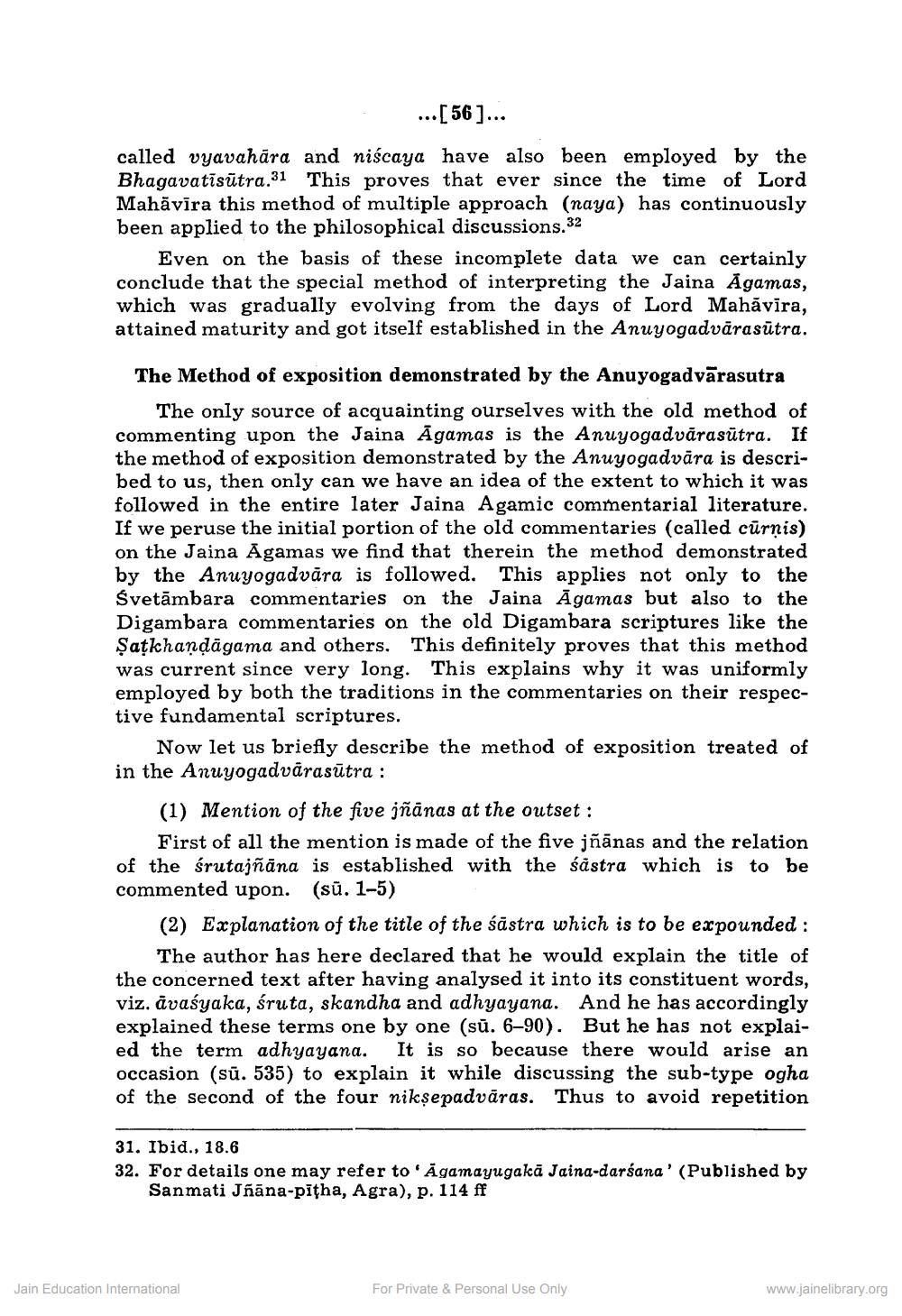________________
... [56]...
called vyavahāra and niscaya have also been employed by the Bhagavatīsūtra.31 This proves that ever since the time of Lord Mahāvīra this method of multiple approach (naya) has continuously been applied to the philosophical discussions.32
Even on the basis of these incomplete data we can certainly conclude that the special method of interpreting the Jaina Agamas, which was gradually evolving from the days of Lord Mahăvira, attained maturity and got itself established in the Anuyogadvārasūtra.
The Method of exposition demonstrated by the Anuyogadvārasutra
The only source of acquainting ourselves with the old method of commenting upon the Jaina Āgamas is the Anuyogadvārasutra. If the method of exposition demonstrated by the Anuyogadvāra is described to us, then only can we have an idea of the extent to which it was followed in the entire later Jaina Agamic commentarial literature. If we peruse the initial portion of the old commentaries (called cūrnis) on the Jaina Agamas we find that therein the method demonstrated by the Anuyogadvāra is followed. This applies not only to the Śvetāmbara commentaries on the Jaina Āgamas but also to the Digambara commentaries on the old Digambara scriptures like the Şatkhandāgama and others. This definitely proves that this method was current since very long. This explains why it was uniformly employed by both the traditions in the commentaries on their respective fundamental scriptures.
Now let us briefly describe the method of exposition treated of in the Anuyogadvārasūtra :
(1) Mention of the five jñānas at the outset :
First of all the mention is made of the five jñānas and the relation of the śrutajñāna is established with the sastra which is to be commented upon. (sū. 1-5)
(2) Explanation of the title of the śāstra which is to be expounded :
The author has here declared that he would explain the title of the concerned text after having analysed it into its constituent words, viz. āvaśyaka, śruta, skandha and adhyayana. And he has accordingly explained these terms one by one (sū. 6–90). But he has not explaied the term adhyayana. It is so because there would arise an occasion (sū. 535) to explain it while discussing the sub-type ogha of the second of the four niksepadvāras. Thus to avoid repetition
31. Ibid., 18.6 32. For details one may refer to 'Agamayugakā Jaina-darśana' (Published by
Sanmati Jñāna-pitha, Agra), p. 114 ff
Jain Education International
For Private & Personal Use Only
www.jainelibrary.org




